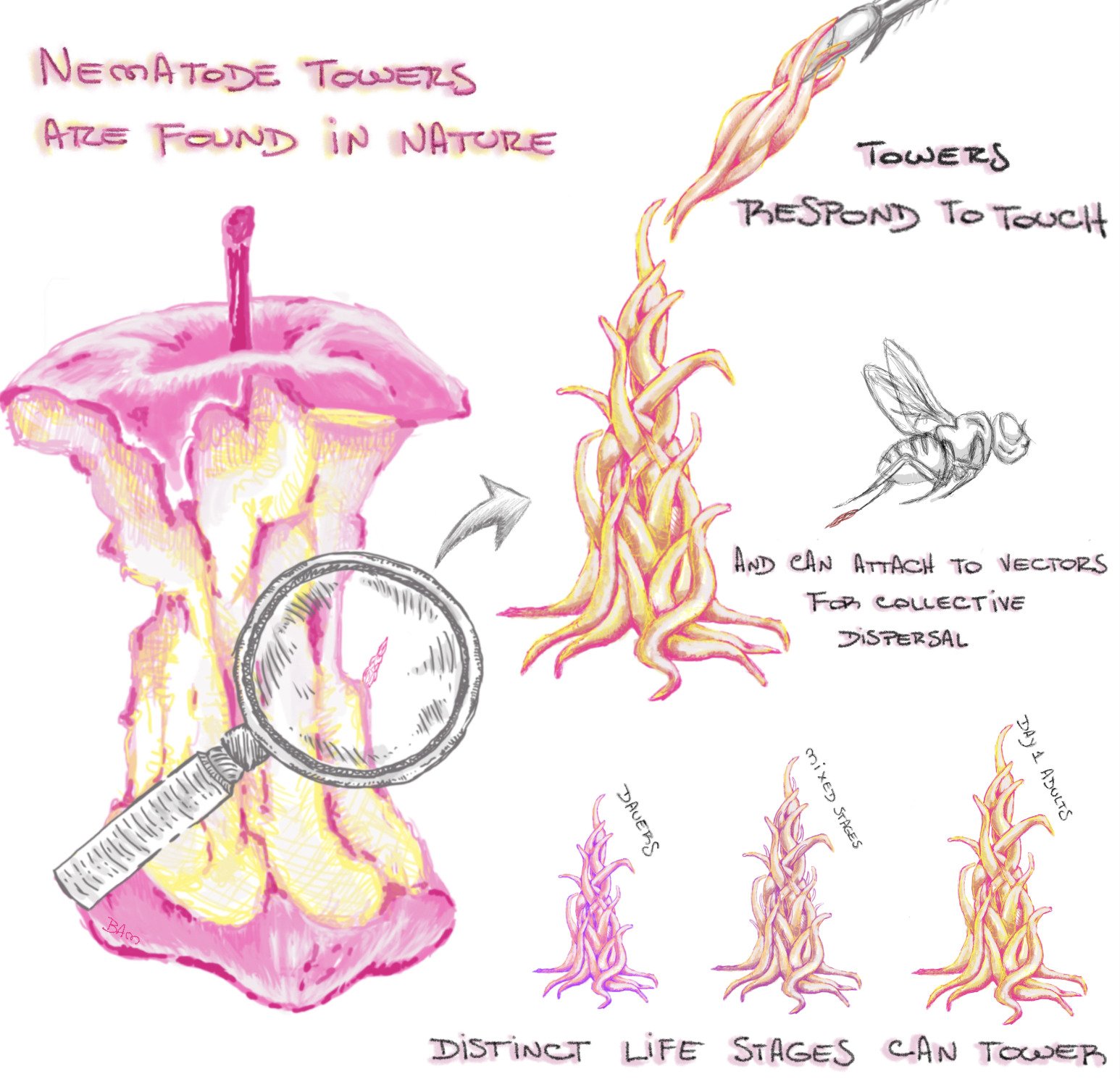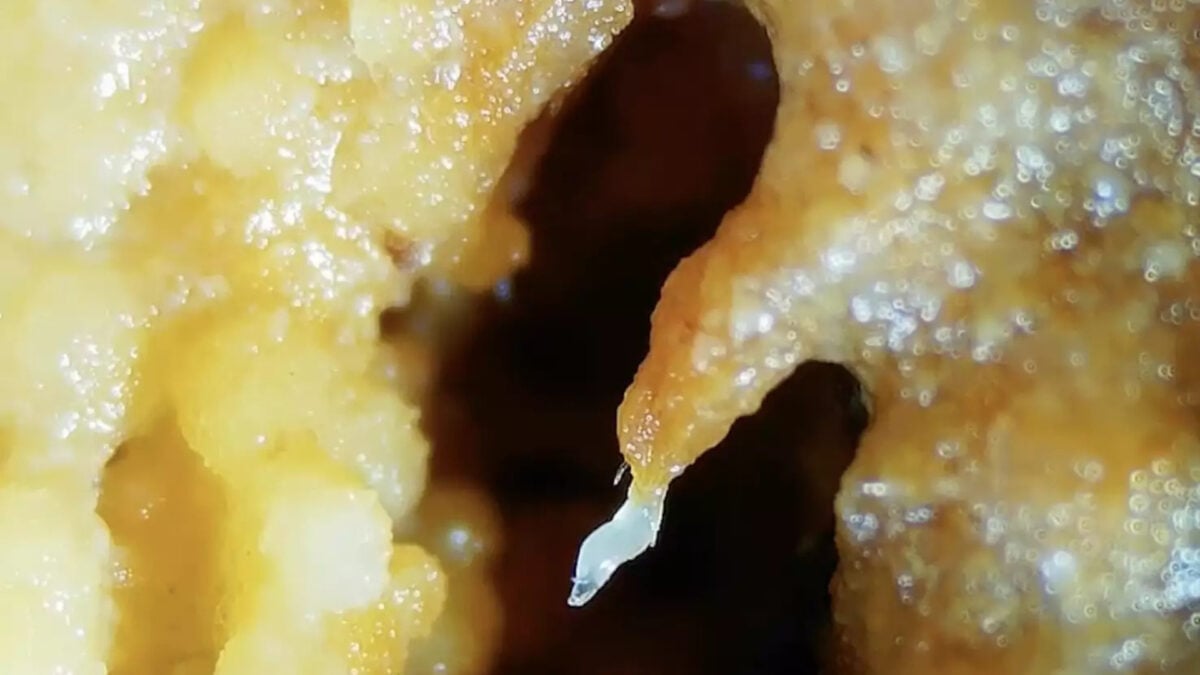Scientists have recently uncovered a fascinating and somewhat unsettling behavior in wild nematodes, commonly known as roundworms: they collaboratively construct writhing, fleshy towers. This remarkable phenomenon, detailed by researchers in Germany in a study published in Current Biology, was previously observed only under laboratory conditions. The findings reveal that these microscopic worms utilize these living structures as a means of transportation, attaching to animals or objects to disperse to new locations, though many aspects of this behavior remain to be explored. This discovery of wild nematode towers opens new avenues for understanding their ecological strategies.
The Hunt for Elusive Worm Structures
According to senior study author Serena Ding, a researcher at the Max Planck Institute of Animal Behavior, the existence of these towers wasn’t entirely unknown within the nematode research community. However, the behavior had attained a near-mythical status because it had never been formally documented in wild nematode populations. This lack of field evidence raised questions about whether tower-building was an artifact of lab environments, potentially limiting the broader applicability of research on this collective action.
“It’s just something that always bugged me. I mean, yes, we’re studying nematode collective behavior in the tower context and other contexts, but is it real?” Ding, who leads a lab focused on nematode research at Max Planck, explained in an interview. “So when I started my research program four years ago, I really dedicated a push towards just actually finding nematodes at a high density and high numbers doing this stuff out there. And then we were successful.”
It required months of persistent effort from Ding’s colleagues, notably co-author Ryan Greenway, to locate and document instances of natural worm tower construction. They found these structures in decaying fruits within orchards near the University of Konstanz, one of the Institute’s locations. Samples were then brought into the lab for detailed study. Concurrently, the team encouraged and analyzed tower formation in the lab using Caenorhabditis elegans, a nematode species widely used in biological research.
 Microscopic view of fluorescently-labeled C. elegans nematodes forming a glowing tower structure around a bristle in a lab setting, demonstrating their collective behavior.
Microscopic view of fluorescently-labeled C. elegans nematodes forming a glowing tower structure around a bristle in a lab setting, demonstrating their collective behavior.
Purpose and Dynamics of Nematode Towers
“There’s the important finding of, ‘Yes, they do exist.’ But the second finding is that we actually confirm the towers can serve to disperse individuals at the same time,” Ding stated. “This [has] always been thought of as a dispersal behavior, but nobody’s really confirmed it.”
The research team observed worms in these towers actively latching onto passing animals, such as fruit flies, or using the towers as makeshift bridges to traverse otherwise impassable gaps. A striking observation was that the towers seemed to respond collectively to stimuli, like being touched. While the host fruits teemed with various nematodes, the towers themselves were consistently composed of only a single species at a time. These characteristics suggest that these living edifices function as temporary “superorganisms,” analogous to slime molds or certain ant colonies, showcasing a sophisticated level of nematode collective behavior.
 Scientific illustration depicting roundworms (nematodes) forming a collective tower to reach and attach to a passing insect for dispersal, showcasing their unique behavioral adaptation.
Scientific illustration depicting roundworms (nematodes) forming a collective tower to reach and attach to a passing insect for dispersal, showcasing their unique behavioral adaptation.
Surprising Findings and Lingering Questions
Although Ding and her team anticipated finding worm towers in natural settings, some of their observations were unexpected. For instance, in lab-grown C. elegans towers, the researchers found no evidence of role specialization among the worms. All individuals appeared equally mobile, with none showing a preferential position, such as at the apex of the tower, which would theoretically offer the greatest dispersal advantage. These lab worms are clonal, meaning they are genetically almost identical. It remains an open question whether such egalitarian dynamics persist among more genetically diverse wild nematodes.
“These are active directions which we’re trying to follow up on right now, because not everybody gets to disperse. So who gets to disperse? Are they helping each other? Are they cheating?” Ding pondered, highlighting future research avenues.
Other mysteries surrounding these roundworm towers persist. Lab experiments demonstrated that C. elegans could build towers throughout their lifespan, including adulthood. This contradicted some previous research suggesting the behavior was exclusive to “dauer” worms—a specific larval stage adopted by some nematodes to endure harsh environmental conditions. Interestingly, all natural towers discovered by the team were exclusively formed by dauer worms, suggesting that specific environmental cues or developmental stages might make this behavior more prevalent in the wild.
Advancing Nematode Research Through Naturalistic Observation
This study marks merely the beginning for Ding and her team, who plan to delve deeper into these unresolved questions. Ding hopes their work will underscore a crucial lesson, particularly for fellow nematode researchers. She pointed out that species like C. elegans are frequently modified in laboratory settings to investigate the molecular underpinnings of certain behaviors. However, she argues that substantial knowledge can still be gained by studying these organisms in their natural environments.
“What I’m trying to do is to take really well-known organisms but study them from a more natural perspective. I want to understand not just how the behavior is generated, but also what the behavior means for the animal from a more ecological and evolutionarily relevant perspective,” she elaborated. “At least for me, this is an important study where as a worm person, I can publish a study without using a single mutant and we’re just looking at the behavior, and what those behaviors say. For me, that’s super exciting.”
Conclusion: Unveiling Nature’s Intricate Mechanisms
The discovery of wild nematode towers significantly advances our understanding of these ubiquitous creatures and their complex social behaviors. It not only confirms a long-suspected phenomenon but also opens new pathways for research into animal collectivism, dispersal strategies, and the ecological roles of nematodes. This research champions the value of field studies in complementing laboratory-based investigations, reminding us that even the smallest organisms can exhibit remarkably sophisticated adaptations. Future studies will undoubtedly continue to unravel the fascinating intricacies of these living structures and the worms that build them.











